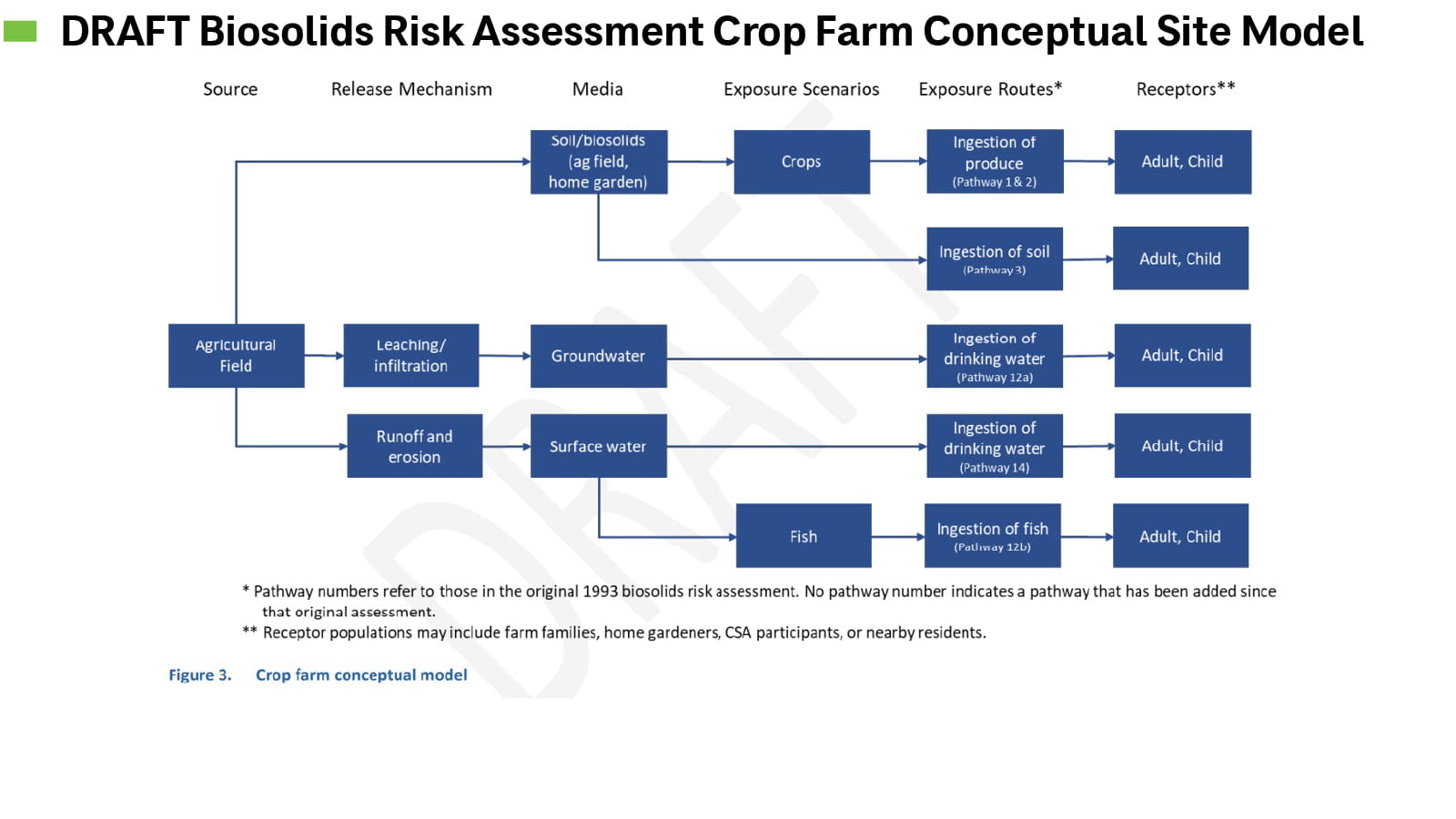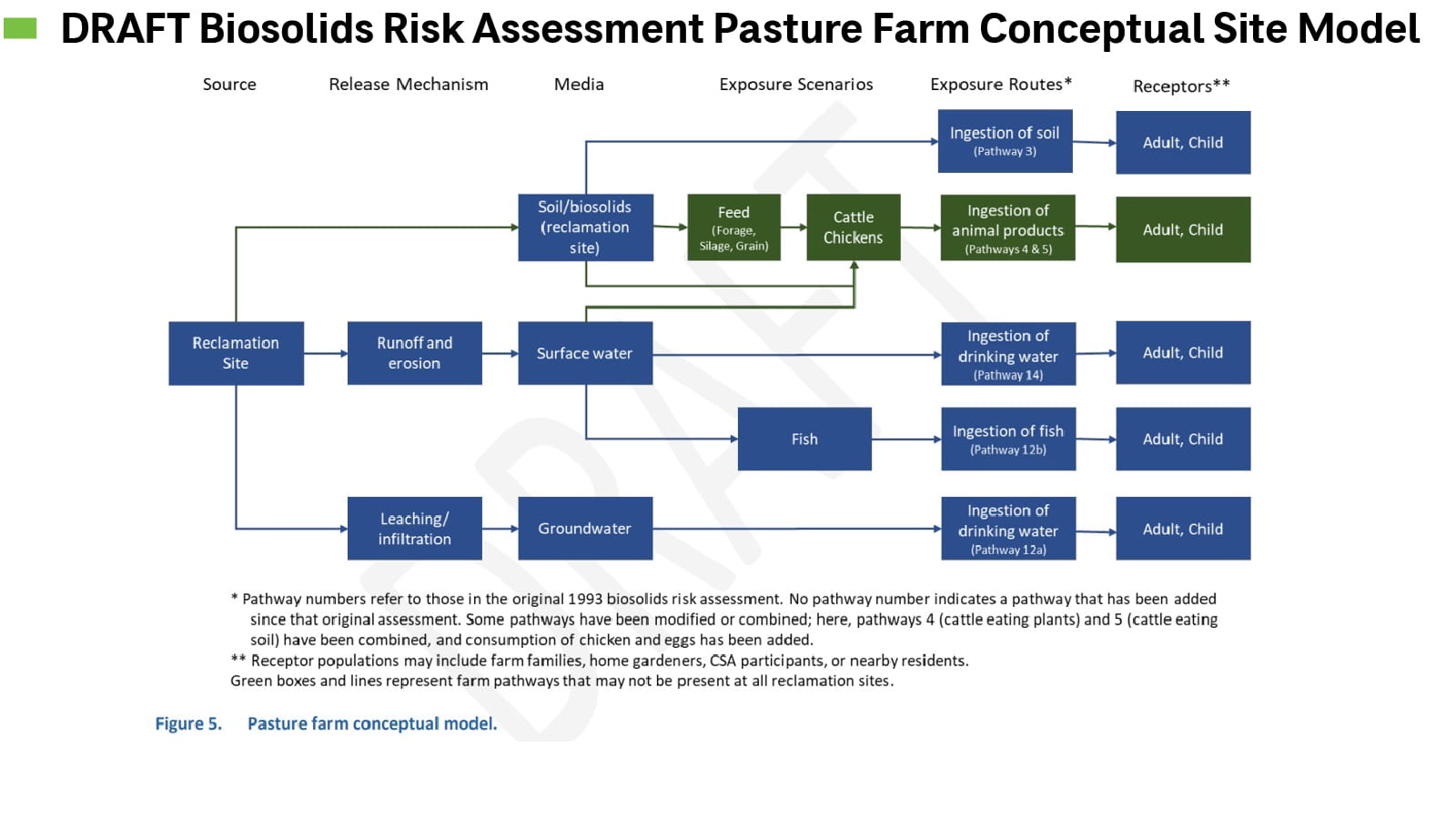Understanding EPA’s Risk Assessment for PFAS in Biosolids
PFAS in biosolids, in particular, are drawing increasing attention due to their potential to infiltrate food systems, drinking water supplies, and soil. The recent draft risk assessment from the EPA marks a pivotal moment in how utilities, regulators, and communities must manage PFAS in wastewater treatment residuals.
EPA’s draft focuses on two legacy compounds—PFOA and PFOS. The document proposes risk-based screening levels that reflect lifetime exposure for sensitive populations. Though it doesn’t set enforceable limits, it signifies where federal PFAS regulations may be headed.
In a recent webinar on “PFAS in Wastewater and Biosolids: How Water Utilities Can Start Breaking the Cycle,” environmental toxicologist Heather Lanza breaks down the draft biosolids risk assessment.
The framework outlines clear exposure assumptions, such as ingestion of biosolids-amended soil, drinking water ingestion, and consumption of homegrown produce or animal products.
“For utilities,” says Lanza, “this means taking a fresh look at how biosolids are managed and where PFAS may be entering the system, whether through land-applied biosolids, food chain uptake or industrial discharges.”
The science is still evolving, and the EPA acknowledges significant data gaps in the risk assessment, especially around exposure pathways and cumulative risks. However, with a patchwork of state-level regulations already in place and more expected, early planning and source control strategies are essential. Understanding your utility’s PFAS load and potential exposure pathways will be crucial in navigating compliance and public expectations.
CDM Smith experts have developed a comprehensive webinar that breaks down EPA’s findings, explains potential exposure routes, and outlines immediate action steps to support utilities in unpacking the draft risk assessment and preparing for what's next. Watch the full webinar to learn how to prepare your utility for a PFAS-resilient future.

It's crucial to remember that wastewater treatment facilities are receivers of PFAS from upstream sources.










